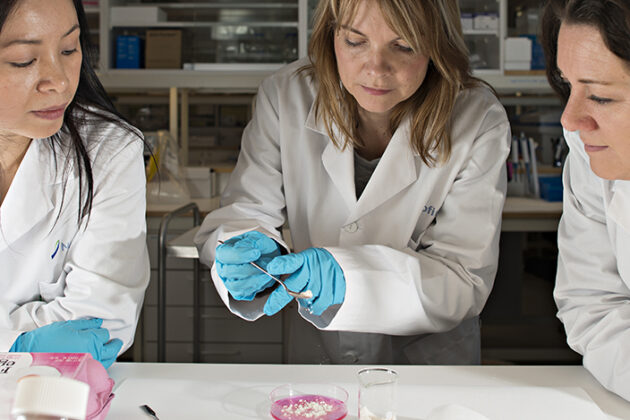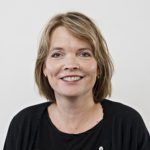Eggshell membrane: from rest raw material to wound-healing product

Raw materials must be used more efficiently to build a more sustainable society. The development of a commercially viable and reasonably priced wound-healing product based on eggshell membranes is an excellent example of innovation in the spirit of bioeconomy.
Scientists at Nofima are participating in a major international project supported by the Research Council of Norway and led by the biotechnology company Biovotec. The objective is to develop a wound-healing product, and it is expected that the product will be commercially available in the near future.
Chronic wounds: an increasing problem
“An aging population and the growth in the number of people with diabetes are two important factors that have led to a rapid growth in the occurrence of chronic wounds. Approximately 20 million people throughout the world are currently suffering serious problems as a consequence of chronic wounds. In many cases, the wounds are so severe that amputation becomes necessary,” says founder and managing director of Biovotec, Ralf Schmidt.
The reason that wounds do not heal is that the cells that are normally responsible for the process do not function as they should. Among other factors, the cells do not properly produce the extracellular matrix, which is a sort of network around the cells.
Wound-healing properties from the thin membrane present immediately under the shell of an egg have long been recognised in Asian and alternative medicine. The first documented research on the effect of the eggshell membrane was performed over a hundred years ago. However, no-one has previously discovered a way to use it for this purpose on a large scale.
Available technology
Biovotec is developing a wound-healing product based on raw materials obtained by a patented method for the automatic separation of the membrane. The method has been developed by the previously Biovotec’s parent company, Agroplas, in collaboration with Nortura. The separation process is now being installed at Nortura’s egg-processing facility at Revetal in Vestfold. Biovotec subsequently activates the membrane, which is a major component in the wound-healing product.
The eggshellmembrane is separated from the remaining egg, activated and ground to a fine powder. Scientists from Nofima use this powder to study the wound-healing effect.
“We use cells to investigate the bioactivity and to reveal possible molecular mechanisms of the eggshell membrane powder. We are also working closely with Biovotec on optimising the process,” says scientist Mona Pedersen. “Furthermore, we are studying its effect on bacterial activity: this is expertise that has been gained here at Nofima by scientist Volha Shapaval.”
From the knowledge on cells and the matrix to new possibilities
The scientists have developed in vitro cell models for wound healing. “We can see that the membrane-derived powder stimulates various cell activities that are necessary in the wound-healing process. Cell activity in our body is controlled by a matrix that surrounds the cells. The membrane-derived powder is such a matrix,” says Mona Pedersen.
The scientists at Nofima have long research experience in matrix biology from several other projects. They have developed cell models that enable them to understand various molecular mechanisms of different biological processes.
“It is both stimulating and exciting to use Nofima’s expertise in this innovative project of Biovotec in line with the new bioeconomy. The cell models enable us to understand how and why the cells react as they do,” says post-doctoral scientist Tram T. Vuong.
Cell studies instead of animal experiments
One major advantage of using cell culture as a method is that it is possible to reveal mechanism at the cellular level. It is not always possible to map the same detailed mechanisms at cell level in animal experiments. Furthermore, cell studies are much cheaper to carry out, and – not least – better for the welfare of animals.
“The cell culture experiments give an initial indication of what will work for animals and people,” says scientist Sissel B. Rønning. She adds that there are stringent requirements for well-documented tests, including human trials, when developing medical products.
Biovotec is working with a British research institution that has more than 20 years’ experience in testing various wound-healing products. Together, they have carried out experiments on diabetic mice, and the results are extremely promising.

Large market potential
“We have now received funding from the EU to start clinical studies on humans. These are to be carried out in collaboration with medical institutions at hospitals in Great Britain,” says Ralf Schmidt.
The product will be in the form of a film or transparent plaster. Its appearance will be similar to Compeed, a plaster used for covering foot blisters, although the film will contain the membrane-derived product.
It is important that the eggs used are free from salmonella, and Norwegian eggs have a clear advantage in this respect. Membranes from 7-8 eggs are needed to create a film of size 10×10 cm, and the Nortura facility in Bø can process 100,000 eggs an hour. So there will be no immediate shortage of raw materials to work with. The remainder of the eggshell will be used in animal feed. A waste product that was previously sent straight to the waste bin will in this way now be used in its entirety.
“The currently available wound-healing products are either extremely expensive or do not work very well on chronic wounds. Our product will cost around a quarter as much as the expensive products. Is it important for us to be able to offer a treatment for all those who are currently forced to live with significant pain and an impaired quality of life,” concludes Ralf Schmidt.
About the research
Research in the project is financed by the Research Council of Norway and Biovotec. Henri-Pierre Suso from Biovotec leads the project.
The expertise required to develop cell models, and to obtain knowledge about the matrix components that control cell activity, has been gained during many years of work in Nofima’s strategic programmes, financed by Norwegian Research Funding for Agriculture and Food Industry. This research has been carried out in addition to other projects in programmes supported by the Research Council of Norway.
It is this fundamental research that forms the basis on which Nofima scientists now can contribute to the study of how activated eggshell membrane functions in the process of wound healing.
Nofima carries out research in muscle growth and meat quality, among other topics. The extracellular matrix plays a central role also here. Some of the components of the extracellular matrix that are present in muscle are present also in the eggshell membrane, which means that scientists from Nofima are familiar with the various biological functions.
